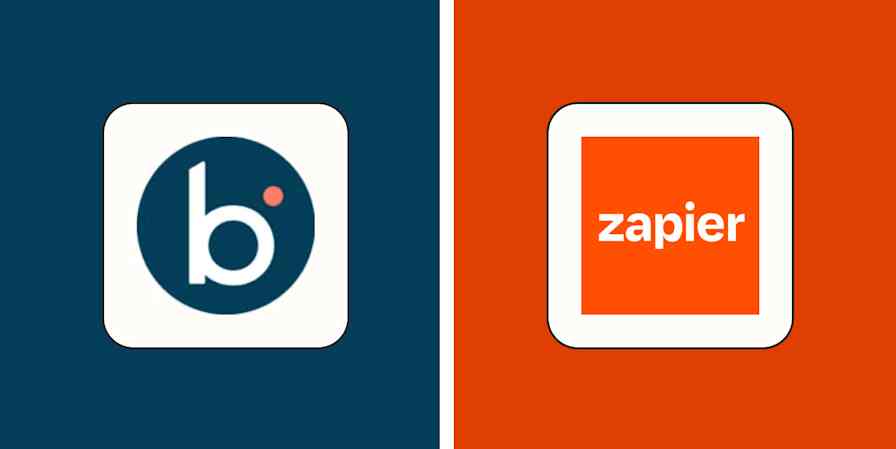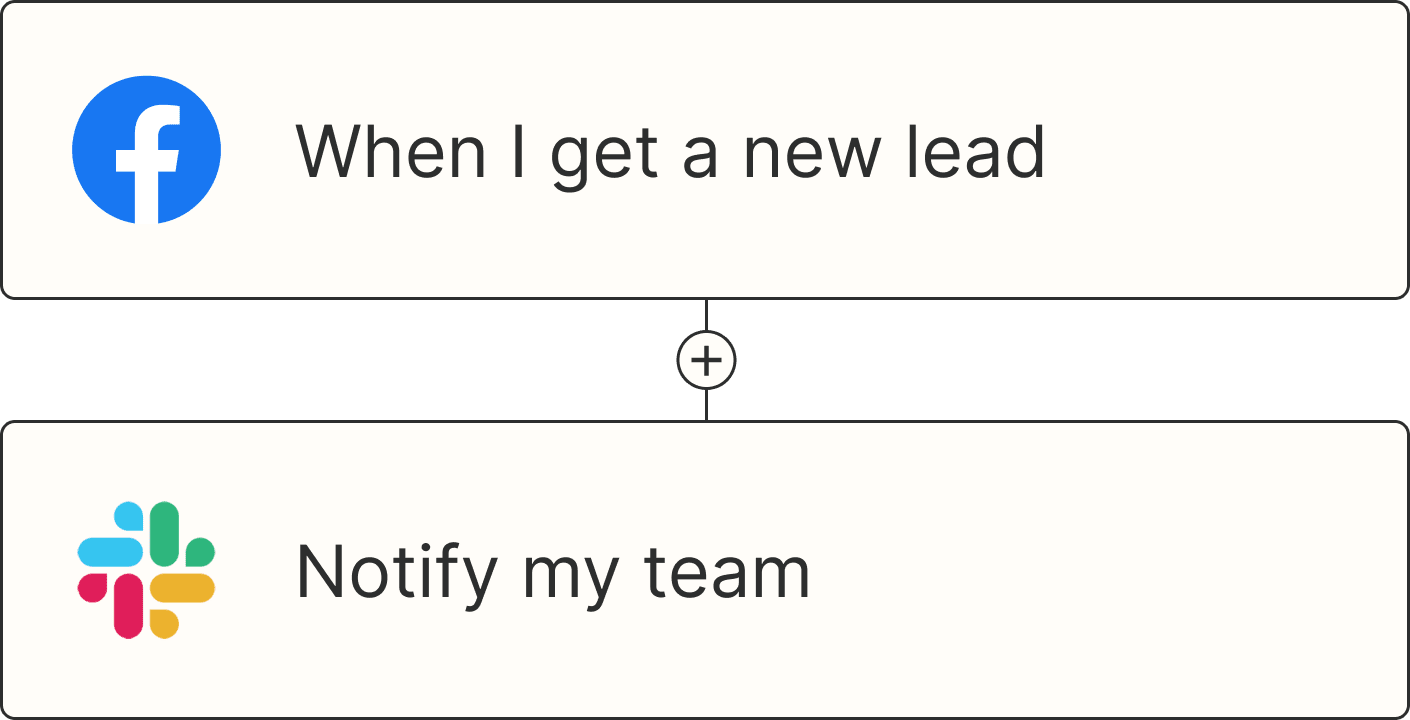If your business uses Microsoft 365, you already have access to Power Automate. It's a capable automation platform that integrates deeply with Teams, SharePoint, Dynamics, and the rest of Microsoft's ecosystem. For Microsoft-to-Microsoft workflows, it's a smart place to start.
But most enterprises have a substantial portion of their tech stack spread across multiple vendors. While Power Automate offers modest support for outside apps, Zapier works natively across whatever combination of apps your teams have adopted.
The Microsoft-vs-everything else factor is one core differentiator, but there's more to unpack too. Here's a full comparison of Zapier and Power Automate so you can decide which approach fits your enterprise.
Table of contents:
Power Automate focuses on Microsoft; Zapier connects with 8,000+ apps
Zapier empowers everyone to automate; Power Automate is built for IT teams
Power Automate has RPA and process mining; Zapier is complete AI orchestration
Zapier has straightforward pricing; Power Automate comes with Microsoft 365, but has hidden costs
Zapier vs. Power Automate at a glance
Both platforms automate workflows, but Power Automate is designed for organizations running primarily on Microsoft tools. Zapier works across any mix of cloud apps, whether you use Microsoft products or not.
Here's a quick overview, but read on for more details.
Zapier | Power Automate | |
|---|---|---|
Ease of use | Non-technical users can build multi-product workflows using Zapier's templates, visual builder, and Copilot | No-code builder and Microsoft Copilot for simple automations; requires IT/Power Platform specialists for complex flows |
Features | Cloud-to-cloud workflows, agents, chatbots, databases, interfaces, process mapping, Zapier Copilot | Cloud flows, desktop flows (RPA), process mining, task mining, AI Builder, Microsoft Copilot |
Integrations | 8,000+ integrations | 1,000+ connectors, including deep Microsoft integrations |
Pricing | Usage-based pricing starting at $19.99/month; $69/month team plan supports up to 25 users; Enterprise plan is custom | Basic version included with Microsoft 365; serious users need Power Automate Premium at $15/user/month; $150-$215/month per bot for unattended RPA |
Enterprise security | SOC 2 Type II, SOC 3, GDPR, SSO, audit logs | SOC 2 Type II, GDPR, SSO, audit logs, HIPAA |
Power Automate focuses on the Microsoft ecosystem; Zapier connects 8,000+ apps and works across any tech stack
Power Automate works well if you're automating within Microsoft's ecosystem. It integrates deeply with Microsoft 365, Dynamics 365, SharePoint, Teams, and Azure. If these platforms run your core business processes and you're not using much else, Power Automate is a solid choice.

But it's increasingly rare for organizations to consolidate their entire tech stack with a single vendor. Once you add even a few non-Microsoft tools to your stack, Zapier's vendor-neutral approach becomes a huge advantage. Zapier connects with more than 8,000 apps and covers everything from enterprise platforms to niche industry tools. Whether you need prebuilt connectors for up-and-coming AI apps like Runway or data visualization tools like Looker Studio, you'll find them.
Zapier also offers built-in support for Microsoft apps like Outlook, Teams, SharePoint, Exchange, and Dynamics 365. Each connector is tested and maintained on Zapier's side, which means you'll spend far less time on technical troubleshooting.

Power Automate does offer prebuilt connectors for non-Microsoft products, though its library of connectors—at around 1,000 apps—is 8x smaller than Zapier's. While there's deep coverage of Microsoft's ecosystem and big enterprise platforms like Salesforce, SAP, and Oracle, anyone looking beyond major enterprise systems will find gaps. And although you can create custom connectors, each one adds to your technical debt since you have to update them yourself when APIs change.
Zapier empowers everyone to automate; Power Automate is built for IT teams
Power Automate is a no-code/low-code platform, but it's designed with technical users in mind. While non-technical users can initiate a project using Power Automate's AI tools or templates, they usually aren't the ones to launch it.
Here's a sample workflow described by Microsoft:
Business analyst uses Microsoft Copilot for process mining and initial cloud flow
Developer customizes and tests the cloud flow and integrates a desktop flow with RPA
IT administrator rolls out the flow, monitors and debugs it, and sets up governance rules
Relying on a highly technical team like this makes sense for some projects, but it also adds overhead, creates bottlenecks, and slows the pace of innovation.
Zapier is designed to speed up adoption by giving everyone in your organization the tools to create automations and AI-powered apps. Marketers, HR managers, and execs can design whatever they need, launch it, and iterate fast.
Even still, your IT team retains full control and can set comprehensive guardrails in advance. Zapier enterprise plans include an Admin Center with centralized oversight of all automations, role-based permissions, audit logs that track every action across the platform, and controls that let IT restrict which apps and actions are available.
Zapier gets you to ROI faster with minimal training
Power Automate offers templates and a Copilot assistant, but building anything beyond basic automations requires an understanding of the Power Platform. Complex workflows in Power Automate involve configuring variables, setting up conditional branches, managing loops, and handling error scenarios. For example, an invoice approval workflow might require multiple developers and architects working together to design the data flow, handle exceptions, and integrate with existing systems.

As a result, training your team to use Power Automate takes time. Beginners need around 10 hours to complete Microsoft's Power Platform Fundamentals course. Intermediate developers can expect to invest around 25 hours to study for the Power Platform Developer Associate certification.
Zapier, on the other hand, is built for immediate productivity. Most users can create their first automation within minutes of signing up, with no training required, and Zapier's library of prebuilt workflows speeds up the time-to-deployment dramatically for thousands of common business scenarios.
For anything custom, Zapier Copilot lets you describe what you need and builds the automation for you. Even complex automations with multiple steps, conditional logic, and data transformations can be built quickly using Copilot, then modified using Zapier's visual editor.

Zapier's speed-to-deployment gets you to ROI faster and eliminates the opportunity cost of waiting in the IT queue. While Power Automate projects can take weeks or months to fully implement and deliver value, Zapier automations often start working the same day they're created.
Power Automate offers RPA and process mining; Zapier is a complete AI orchestration platform
For enterprises with legacy systems, Power Automate's robotic process automation (RPA) offers a way to connect those older applications to modern systems. RPA can also handle tasks like repetitive data entry, and can handle both attended and unattended automations.
Power Automate also provides tools for task and process mining to uncover inefficient processes that could benefit from automation.

Zapier doesn't offer RPA, task mining, or process mining. Instead, it's focused entirely on cloud-to-cloud workflows, with a suite of features that let you create complex multi-product solutions from a single platform.
Zapier's platform connects a suite of automation and AI tools:
Zaps connect your apps and automate repetitive work
Agents handle complex tasks using AI decision-making
Chatbots provide instant AI-powered customer support
Tables centralize your business data in one place
Interfaces let you capture data and send it where you need it
Canvas plans, documents, and optimizes how work gets done
Copilot transforms plain-English descriptions into working automations
And it's all one cohesive experience. You can easily combine multiple Zapier products by asking Copilot to string them together. For example, the workflow below uses Zaps to automate tasks, Interfaces to collect responses, and Tables to store and organize the data.

Zapier offers straightforward usage-based pricing; Power Automate comes with Microsoft 365 but has hidden costs
Microsoft 365 users get access to a limited version of Power Automate that supports cloud-based workflows. If you're just setting up simple automations between Microsoft apps—like posting a message on Teams when a new SharePoint item is created—that's included at no extra cost.
But there's a long list of "premium connectors" that aren't covered with the 365 license, including common enterprise apps like Azure, Salesforce, SAP, and Pipedrive. If the apps you need to connect with aren't covered, you'll have to add Power Automate Premium for another $15/user/month. Power Automate Premium also includes attended RPA. If you need unattended RPA, that costs another $150-$215/month per bot. Process mining costs an additional $5,000/month per tenant.
Zapier's pricing is more straightforward. Plans start at $19.99/month for solo users, with Team plans that cover up to 25 users available for $69/month. Once you've scaled, you can move to an enterprise plan with custom pricing, advanced admin capabilities, and access to a technical account manager. And unlike Power Automate, Zapier's pricing is driven by task usage rather than the number of users accessing the platform, making it cost-efficient for larger teams.
Then there's the total cost of ownership. Power Automate's complexity means most organizations need to hire Power Platform specialists, either as full-time employees or consultants. Training costs, custom connector development costs, and ongoing maintenance costs also push up the total cost. With Zapier, non-technical users can scale automation across the organization, eliminating the need for expensive consultants and reducing IT hiring needs. And since Zapier includes far more prebuilt (and automatically maintained) connectors, custom development and ongoing maintenance costs are typically lower.
Power Automate vs. Zapier: Which is best?
Power Automate has advantages if you run your entire business within the Microsoft ecosystem. But unless you need RPA capabilities, Zapier's vendor-neutral approach starts making more sense the moment you need to connect an enterprise app that falls outside Microsoft's ecosystem.
Choose Zapier if:
Your tech stack includes popular tools beyond Microsoft's ecosystem
You want business teams to build their own automations instead of relying solely on IT
You need comprehensive AI capabilities like agents, chatbots, databases, and interfaces
You prefer usage-based pricing over per-user licensing
You need to launch automations quickly
Choose Power Automate if:
You run your entire business on Microsoft 365 and Dynamics with few outside tools
You need desktop automation (RPA) for legacy systems that don't have modern APIs
You have dedicated Power Platform specialists on staff
You require HIPAA compliance for healthcare data
You want to manage governance through Microsoft's admin center
For many enterprises, both platforms can coexist. Use Power Automate for deep Microsoft integrations and RPA needs, with Zapier connecting to the broader SaaS ecosystem and empowering teams across your organization to automate their own workflows.
Create a Zapier account to start building automations now, or connect with the Zapier team to learn how Zapier can fit into your enterprise automation strategy.
Related reading:









